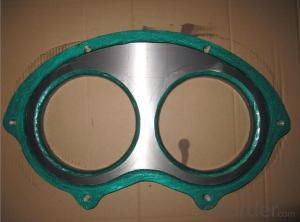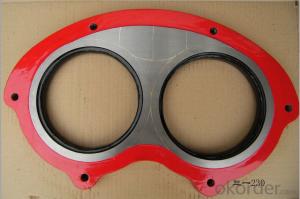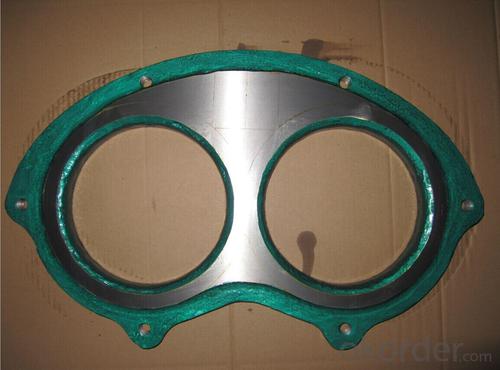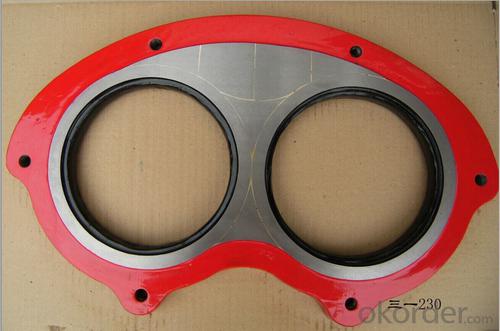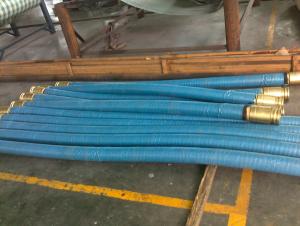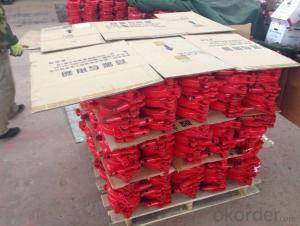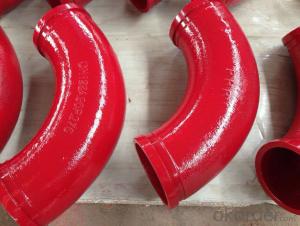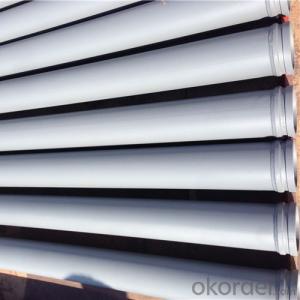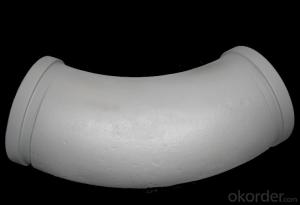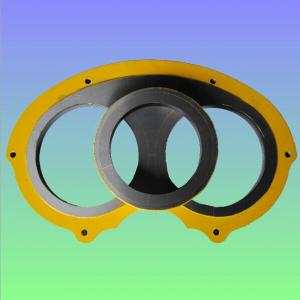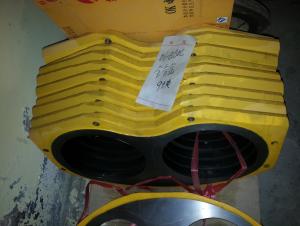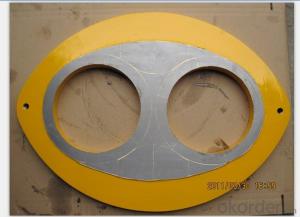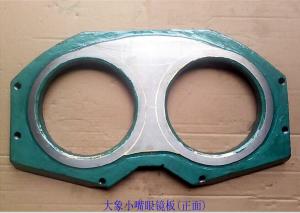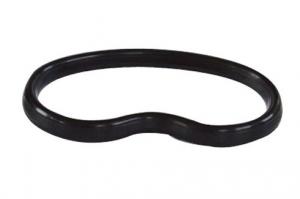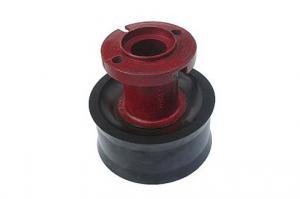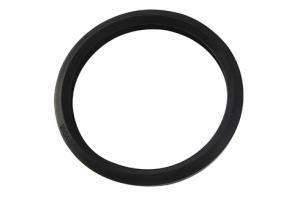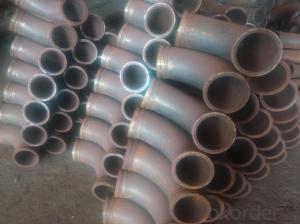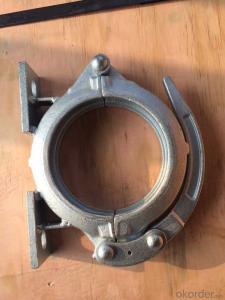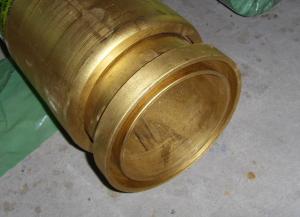SANY Spectacle Plate DN220 with High Quality
- Loading Port:
- Tianjin
- Payment Terms:
- TT or LC
- Min Order Qty:
- 3 pc
- Supply Capability:
- 1000 pc/month
OKorder Service Pledge
OKorder Financial Service
You Might Also Like
Product Description:
Product Name: SANY Spectacle Plate DN220 with High Quality
1. Specification
1. Material: Plate body S35C steel, tungsten carbide E5 grade ,
2. Lifetime: 30,000~80,000cbm
3. HRA≥86
4. Germany Welding rod used for hardfacing
5. tensile strength ≥ 2500 N/mm2
6. Application: trailer and trunk mounted Sany concrete pump
Notes: total series of Concrete Pump Spectacle Wear Plate and Cutting Ring for different brand concrete pump (PUTZMEISTER, SCHWING, CIFA, SANY, ZOOMLION, IHI, KYOKUTO,Niigata Etc) available from us.
2. Application
Our SANY Spectacle Plate DN220 with High Quality have been successfully exported to many countries from 1998, Our main markets as below: Middle East, Southeast Asia, America, Brazil, Italy, Russia, South Africa etc
Aiming at the largest concrete pump parts manufacturer, and reliable, professional supplier in China, we can supply concrete pump elbows, delivery pipes, casting or forging couplings, end rubber hoses, rubber pistons, tungsten wear plates, delivery cylinders, and other hydraulic parts, one stop service for your concrete pump parts and accessory business.
3. Package
Every 60pcs SANY Spectacle Plate DN220 with High Quality put in one seaworthy wooden box, and 20 boxes in one 20feet container.
FAQ:
Q1: Why buy Materials & Equipment from OKorder.com?
A1: All products have its ISO certifications, adheres to the highest standards and a commitment to supply chain safety and customer satisfaction.
Q2: How do we guarantee the quality of our products?
A2: We have established an advanced quality management system which conducts strict quality tests at every step, from raw materials to the final product. At the same time, we provide extensive follow-up service assurances as required.
Q3: How soon can we receive the product after purchase?
A3: Within three days of placing an order, we will begin production. The specific shipping date is dependent upon international and government factors, but is typically 10 to 30 workdays.
Q4: If we can produce some SANY Spectacle Plate DN220 with High Quality according to customers request?
A4: Yes, we can produce SANY Spectacle Plate DN220 with High Quality according to the difference country situations and different concrete pump to make it suitable to the market and customers. We have very professional technical team to make the design.
Q5: How to make a quick resolution for after service?
A5:We have overseas branches all-around of world, IF needed, the seller shall dispatch 2 engineers to the buyer's site for supervision of training. The buyer shall make available of necessary facilities &skilled personnel at site for training.
Images:
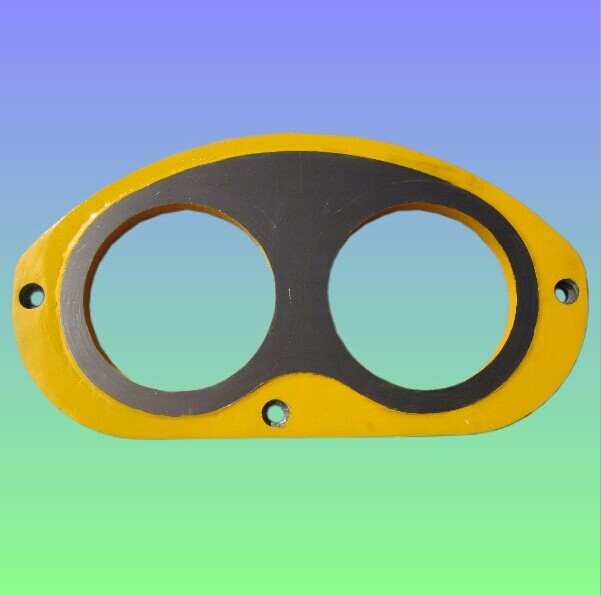
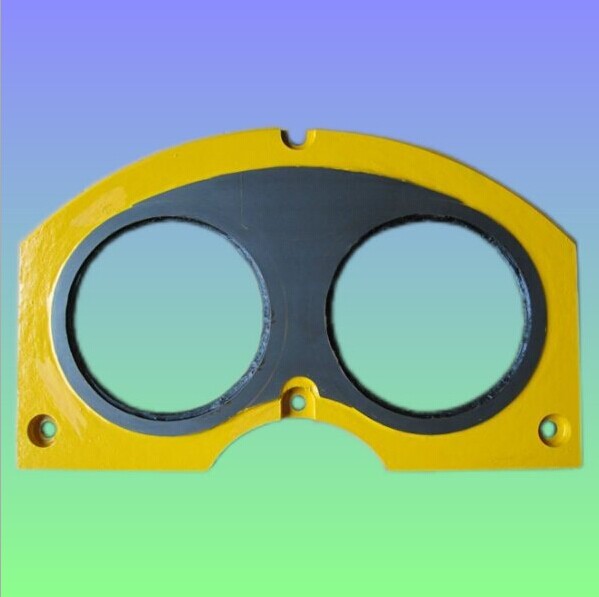
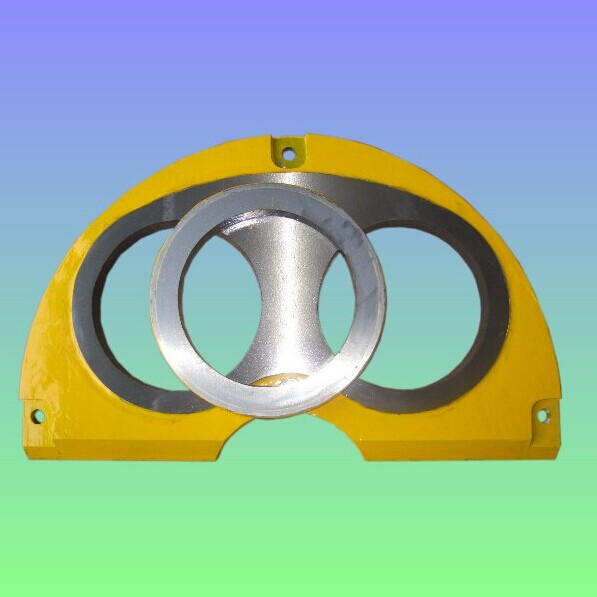
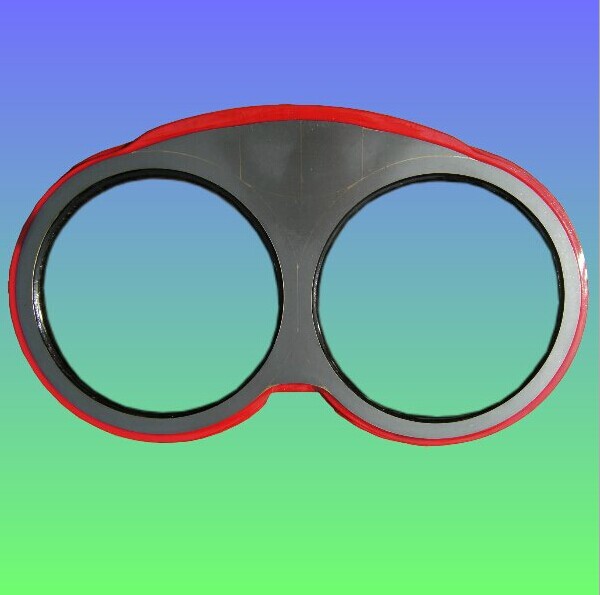
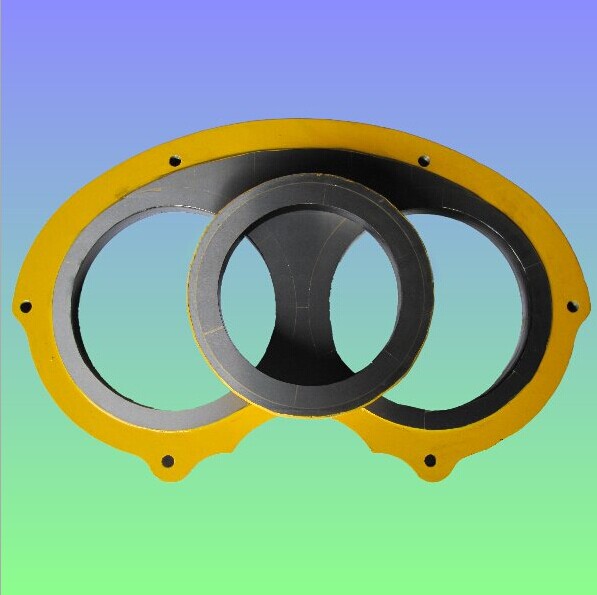
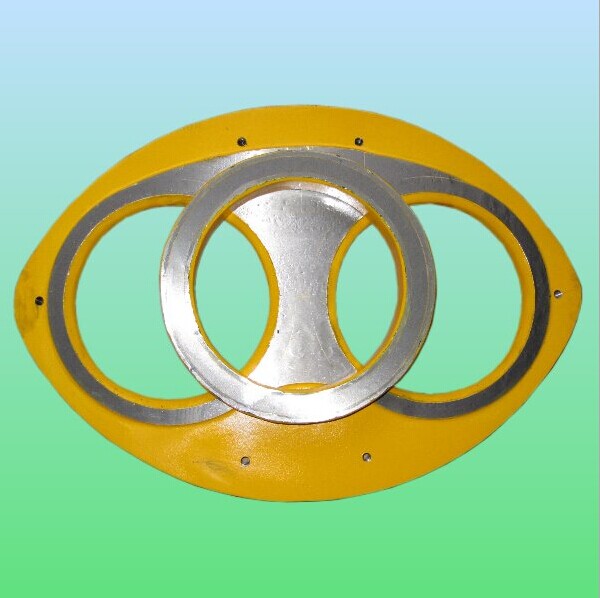
- Q: How often should hopper cylinders be inspected or replaced in a concrete pump?
- To ensure optimal performance and prevent potential malfunctions, it is essential to regularly inspect hopper cylinders in a concrete pump. The frequency of inspections and replacements depends on various factors, such as usage intensity, the type of concrete being pumped, and the overall condition of the equipment. As a general recommendation, it is advised to inspect hopper cylinders at least once a month or after every 100 hours of operation, whichever comes first. During these inspections, thoroughly examine the cylinders for any indications of wear, corrosion, or damage. Additionally, check the functioning of the seals, gaskets, and other components connected to the cylinders. Nevertheless, it is crucial to note that the inspection frequency may need to be increased if the pumped concrete contains abrasive materials or if the pump operates in harsh environmental conditions. In such situations, more frequent inspections and replacements may be necessary to prevent unexpected breakdowns and costly repairs. Ultimately, the objective is to maintain the hopper cylinders in a good state and promptly address any issues. Regular inspections, along with routine maintenance and proper cleaning, can significantly extend the lifespan of the cylinders and ensure the concrete pump operates efficiently and safely.
- Q: What is the purpose of a concrete pump hopper agitator motor?
- To ensure a smooth and consistent flow of concrete within the hopper, the concrete pump hopper agitator motor serves its purpose. It takes responsibility for mixing and agitating the concrete mixture, preventing any settling or thickening. By keeping the concrete in a fluid state, this motor ensures easy pumping and distribution through the delivery system. Absence of the agitator motor can result in the concrete mixture becoming stiff, causing blockages and delays in the pumping process. Ultimately, the concrete pump hopper agitator motor's aim is to maintain the quality and efficiency of concrete pumping operations by ensuring a well-mixed and smooth flow.
- Q: What is the difference between concrete pump and ground pump?
- Ground pump only conveying function, the price is cheaper, and now are used to transport mixing machine, the ground pump is a bit uneconomical
- Q: What are the common signs of wear and tear on concrete pump spare parts?
- The specific signs of wear and tear on concrete pump spare parts can vary depending on the part in question. However, there are general indications that suggest when a concrete pump spare part is experiencing wear and tear. One indication is the presence of visible damage or deterioration on the surface of the part. This may manifest as cracks, chips, or dents on the outer layer of the spare part. These damages can occur due to regular usage, exposure to harsh environmental conditions, or accidental impact during operation. Another sign is an increase in vibration or noise during operation. If a concrete pump spare part is undergoing wear and tear, it may generate unusual vibrations or noises that were not evident when it was in good condition. This can signify internal damage or misalignment of the part, which can impact its overall performance and efficiency. Diminished performance or efficiency is also a common signal of wear and tear on concrete pump spare parts. If a part is experiencing wear and tear, it may not operate as efficiently as before, resulting in reduced pumping capacity, decreased flow rate, or inefficient operation. This can cause delays in construction projects and increased maintenance costs. Furthermore, an escalation in maintenance and repair requirements can indicate wear and tear on concrete pump spare parts. If a part needs more frequent repairs or replacements than usual, it may suggest that it is undergoing wear and tear. Regular inspections and maintenance can aid in early identification of potential issues and prevent further damage to the spare parts. In conclusion, signs of wear and tear on concrete pump spare parts can include visible damage, heightened vibration or noise during operation, diminished performance or efficiency, and increased maintenance demands. It is crucial to regularly inspect and maintain these spare parts to ensure optimal performance and prolong their lifespan.
- Q: Are there any environmental considerations in the production of concrete pump spare parts?
- Concrete pump spare parts have several environmental considerations. Firstly, the production process involves the use of various materials and chemicals that can harm the environment. For instance, steel components require the extraction of iron ore and emit greenhouse gases during smelting. Similarly, rubber parts use petroleum-based materials, which contribute to carbon emissions and pollution. Additionally, the disposal of these spare parts after their useful life can create environmental challenges. If not managed properly, they can end up in landfills, leading to waste accumulation and potential soil and water contamination. Hence, it is crucial to consider the recyclability and reusability of these parts during their design and production. To address these concerns, manufacturers can adopt sustainable practices. This includes incorporating recycled materials like steel or rubber into the manufacturing process. Moreover, efficient production techniques can reduce waste generation and energy consumption. Establishing proper waste management and recycling programs is also vital for responsible disposal of these spare parts. Overall, by considering the environmental impacts associated with the production and disposal of concrete pump spare parts, manufacturers can contribute to a more sustainable and eco-friendly industry.
- Q: How often should hydraulic pumps be inspected or replaced in a concrete pump?
- Hydraulic pumps in a concrete pump should be inspected regularly to ensure their proper functioning and prevent any potential issues. The frequency of inspections depends on various factors such as the intensity of use, operating conditions, and manufacturer's recommendations. Generally, it is recommended to inspect hydraulic pumps in a concrete pump every 500 to 1,000 operating hours or at least once a year, whichever comes first. However, if the pump is being used in harsh or demanding conditions, more frequent inspections may be necessary. Replacement of hydraulic pumps should be based on their condition and the recommendations of the manufacturer. If the pump shows signs of significant wear and tear, leaks, reduced performance, or any other issues that cannot be resolved through maintenance or repair, it may be necessary to replace the hydraulic pump to ensure the safe and efficient operation of the concrete pump.
- Q: How can a faulty battery affect the operation of the pump?
- A faulty battery can affect the operation of the pump by causing it to lose power or stop working altogether.
- Q: When concrete is poured, how high can the concrete pump be put?
- When the floor height exceeds the applicable height of the automobile pump, the ground pump (stationary pump) is used to pour and grind the concrete, and the height of the pump can reach more than 100 meters to two hundred meters
- Q: What is the function of a concrete pump water pump?
- The function of a concrete pump water pump is to supply water to the concrete pump system, aiding in the smooth and efficient operation of the equipment.
- Q: What are the signs of a faulty concrete pump control panel?
- A faulty concrete pump control panel can be identified through various indicators. To begin with, the control panel not powering on or experiencing intermittent power loss may suggest a faulty electrical connection or a malfunctioning power supply. This can hinder the proper functioning of the panel and its ability to control the concrete pump. Furthermore, error messages or error codes displayed on the control panel may indicate issues with the internal components or sensors. These errors can range from minor malfunctions to more serious problems that require immediate attention. Additionally, an erratic behavior or unresponsive controls of the control panel can be observed. If the buttons or switches do not respond when pressed or behave inconsistently, it could signal a problem with the panel's circuitry or wiring. Moreover, the occurrence of unusual noises or vibrations emanating from the control panel may be a sign of internal mechanical issues. These could include loose or damaged components, faulty relays, or malfunctioning motors. Lastly, if the concrete pump does not perform as expected, it may be attributed to a faulty control panel. Insufficient pressure, incorrect flow rates, or difficulties in starting or stopping the pump can all indicate a malfunctioning control panel. Regardless of the indicator, it is crucial to seek the assistance of a professional technician or the manufacturer for inspection, diagnosis, and repair if there is suspicion of a faulty control panel in a concrete pump.
Send your message to us
SANY Spectacle Plate DN220 with High Quality
- Loading Port:
- Tianjin
- Payment Terms:
- TT or LC
- Min Order Qty:
- 3 pc
- Supply Capability:
- 1000 pc/month
OKorder Service Pledge
OKorder Financial Service
Similar products
Hot products
Hot Searches
Related keywords
